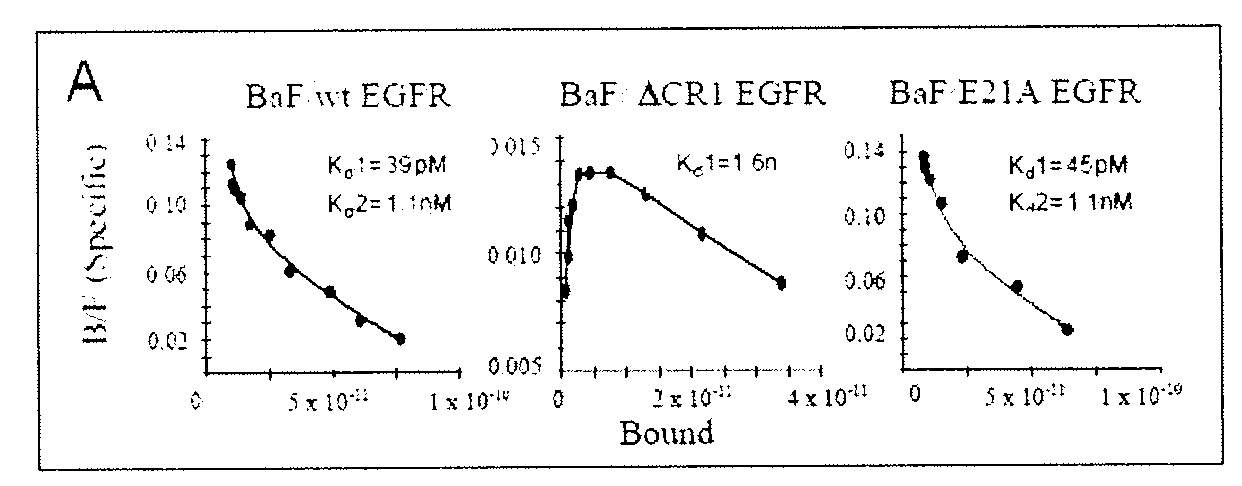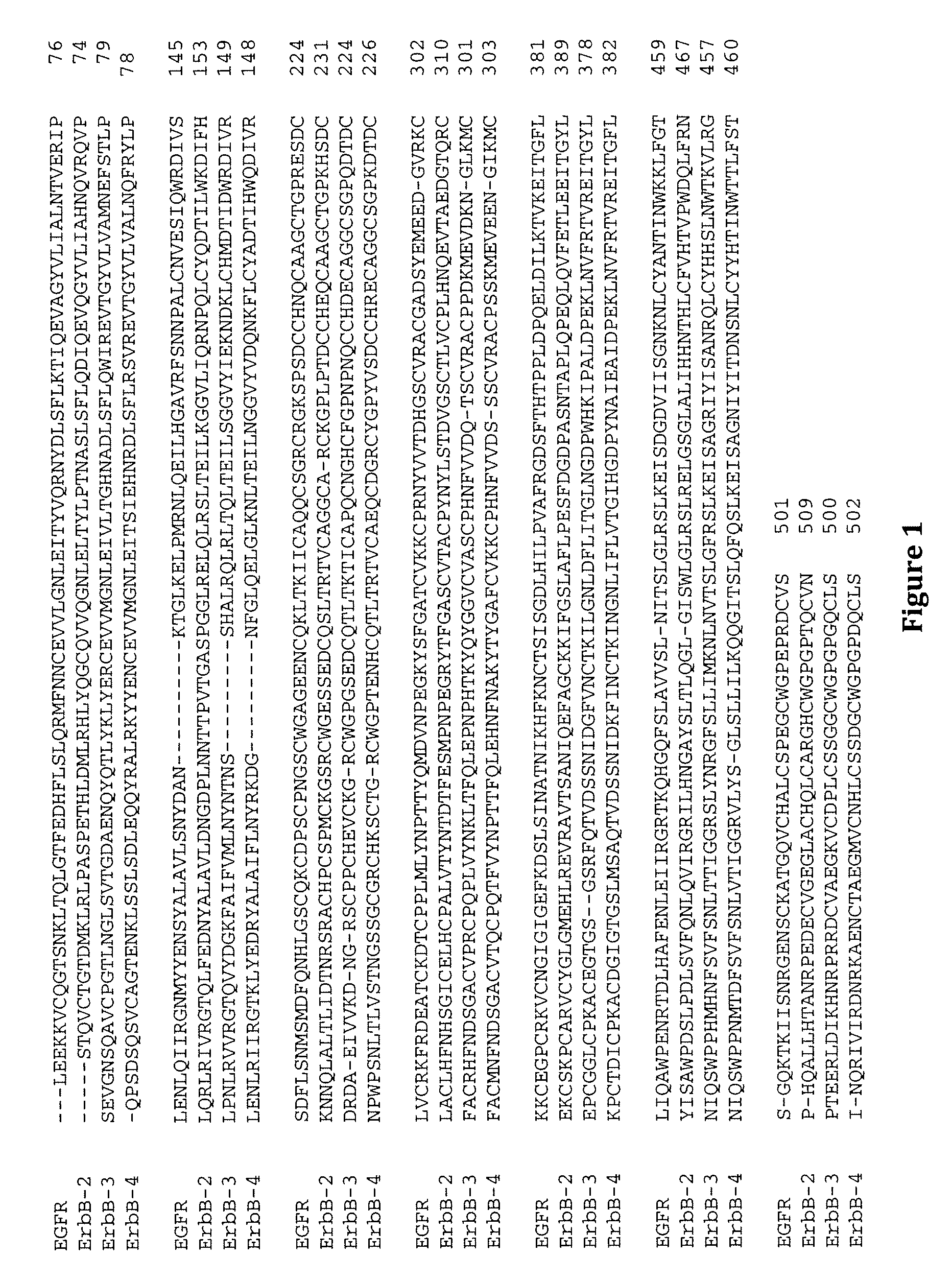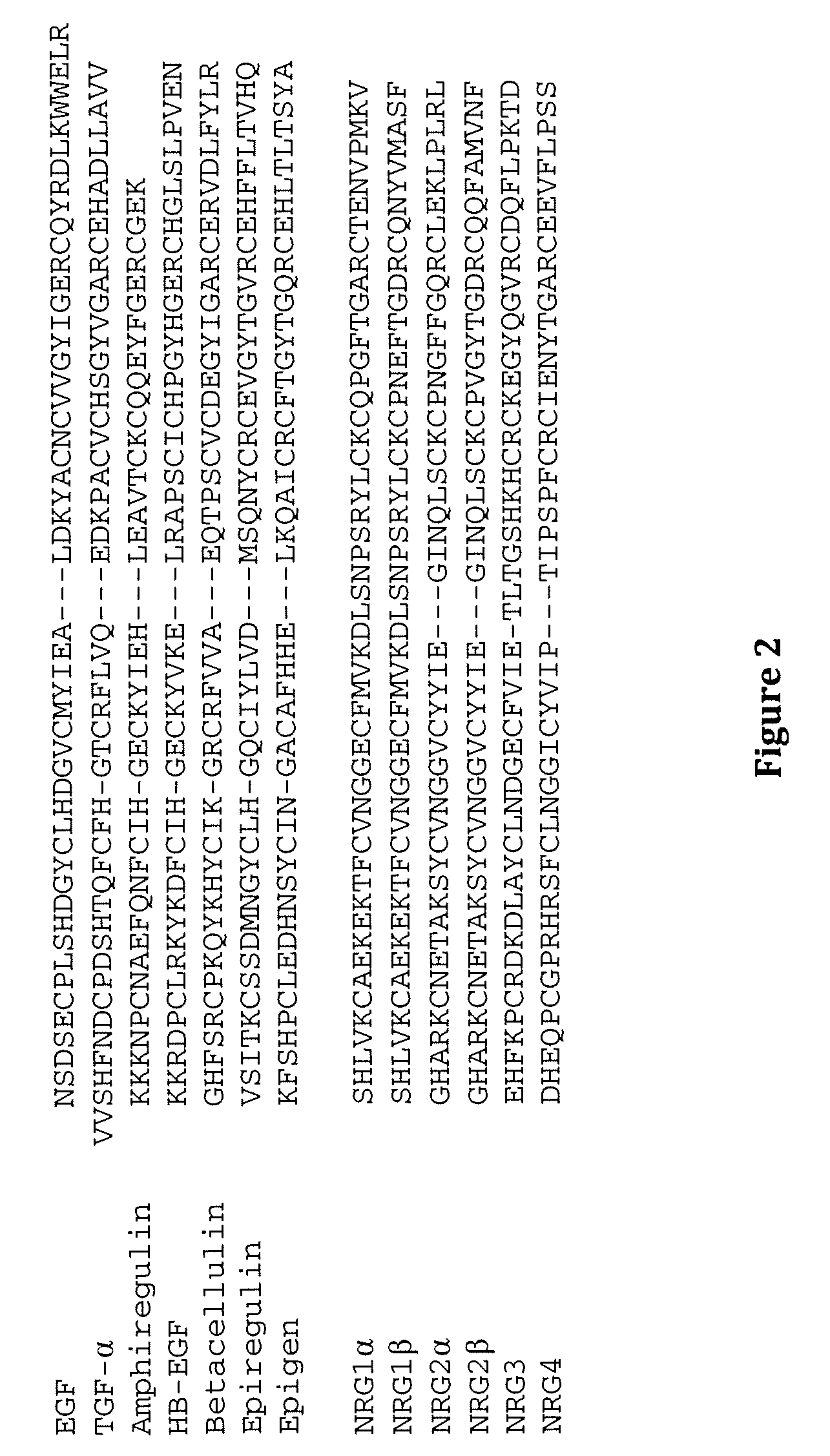Methods of screening based on the EGF receptor crystal structure
a screening method and crystal structure technology, applied in the field of screening based on the crystal structure of the egf receptor, can solve the problems that the cost of humanised mab production is likely to limit the application of this type of therapy, and achieve the effects of enhancing binding, affecting association rate, and increasing affinity of binding
- Summary
- Abstract
- Description
- Claims
- Application Information
AI Technical Summary
Benefits of technology
Problems solved by technology
Method used
Image
Examples
example 1
Protein Preparation of sEGFR501
[0223] The derivation of stably transfected Lec8 cells expressing sEGFR501 and the subsequent purification and characterisation of the secreted ectodomain has been described in detail (Elleman et al., 2001, Biochemistry 40:8930-8939.). Purified sEGFR501 was shown, by isoelectric focusing gels to be unstable on storage, the majority of isoforms being transformed into products with less acidic isoelectric points. This change was accompanied by a small mobility increase (estimated at 1-2 kDa) on SDS polyacrylamide gels. N-terminal sequence analysis showed that the new product retained the expressed N-terminus of sEGFR501, suggesting that the apparent 1-2 kDa reduction in mass and increase in positive charge might be due to partial or complete loss of the acidic-residue rich C-terminal tag and enterokinase cleavage site. Prolonged storage led to the majority of protein converting to the least acidic isoform of pI˜6.6, which appeared to remain stable. The ...
example 2
Crystallization and Data Collection
[0224] sEGFR501 obtained from the above procedures appeared nearly homogeneous on SDS and IEF gels and was used in crystallization trials alone and in combination with several ligands. The best diffracting crystals were obtained from mixtures containing a five-fold molar quantity of human TGFα (GroPep receptor grade) compared to sEGFR501. Crystals of sEGFR501 in complex with TGFα were grown in 7% PEG 3350, 20% Trehalose, 10 mM CdCl2 and 100 mM HEPES, pH 7.5, and belonged to the space group P21 (a=51.59, b=198.71, c=78.90 Å, β=102.03°). These crystals were cryo-cooled to −170° C. in the same mother liquor. Data were recorded on a Rigaku RAXIS VI area detector using a Siemens M18XHF X-ray generator with Yale / MSC mirrors or a Rigaku RU300 generator and AXCO capillary optics. Crystals were also derivatised by soaking in mother liquor containing 1-10 mM heavy atom compounds and diffractions data were collected as before and statistics are given in Tabl...
example 3
Phase Determination and Structure Refinement
[0225] Phasing by multiple isomorphic replacement was performed with programs from CCP4 (Collaborative Computational Project Number 4, 1994) and SHARP (De La Fortelle and Bricogne, 1996, Methods Enzymol. 276: 472-494) and the resulting electron density maps were improved by solvent flattening and histogram matching with DM (Cowtan, K. 1994, Joint CCP4 and ESF-EACBM Newslett. Protein Crystallogr. 31:34-38). Details are given in Table 1. Density averaging using noncrystallographic symmetry was not of much value as the proteins corresponded to more than three rigid groups. The polypeptide chains for two receptor and two ligand molecules were fitted manually and refined with CNS (Brunger, et al., 1998, X-PLOR Reference Manual 3.851, Yale Univ., New Haven, Conn.). As the highest resolution data were collected for the PIP derivative these data were use for the final stages of refinement. During the refinement an overall anisotropic temperature ...
PUM
| Property | Measurement | Unit |
|---|---|---|
| mass | aaaaa | aaaaa |
| three-dimensional structures | aaaaa | aaaaa |
| NMR | aaaaa | aaaaa |
Abstract
Description
Claims
Application Information
 Login to View More
Login to View More - R&D
- Intellectual Property
- Life Sciences
- Materials
- Tech Scout
- Unparalleled Data Quality
- Higher Quality Content
- 60% Fewer Hallucinations
Browse by: Latest US Patents, China's latest patents, Technical Efficacy Thesaurus, Application Domain, Technology Topic, Popular Technical Reports.
© 2025 PatSnap. All rights reserved.Legal|Privacy policy|Modern Slavery Act Transparency Statement|Sitemap|About US| Contact US: help@patsnap.com



